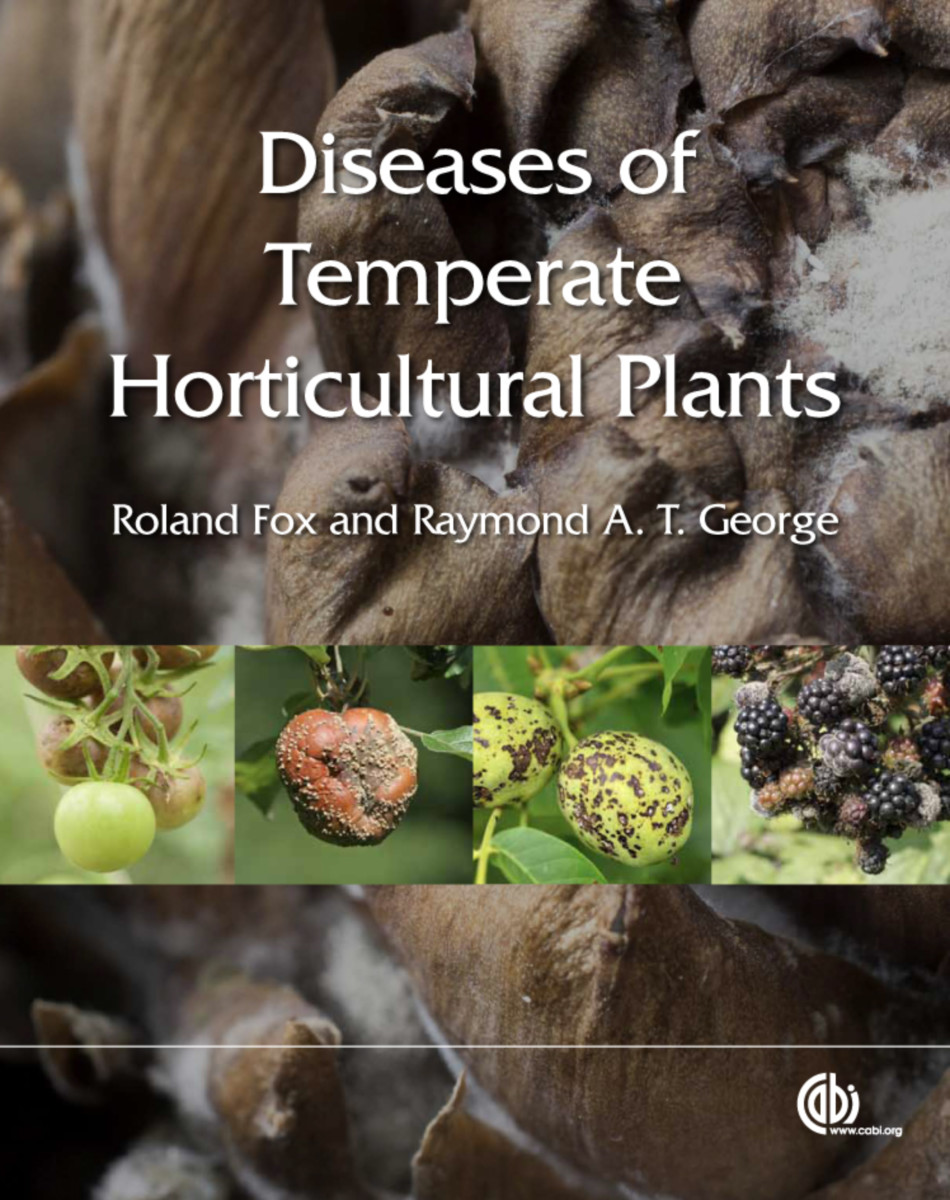Diseases of Temperate Horticultural Plants
- Publisher
CABI - Published
22nd December 2014 - ISBN 9781845937737
- Language English
- Pages 488 pp.
- Size 6.75" x 9.5"
- Images color photos
Containing an extensive range of photographs and authored by leading horticultural experts, Diseases of Temperate Horticultural Plants is an indispensable reference work for horticultural professionals, academics, students and crop producers as well as amateur horticulturists. The diseases of major crops are presented according to their classification, and the symptoms of each disease, causal pathogen and control measures for each condition are described.
The crops covered include the major temperate horticultural crops, organized into easy-to-navigate sections divided into fruits, vegetables and ornamentals. Within fruits, apples and pears are discussed, as well as ribes and berries, cherries, peaches and plums, nut crops and rhubarb.
The vegetable section covers salad crops, brassicas and crucifers, cucurbits, root vegetables, bulb crops, solanaceous vegetables and some herbs. The section on ornamental plants includes a wide range of ornamental garden plants, while a further section discusses diseases of turf grass and ornamental lawns.
The book is user-friendly with practical, accessibly written entries organized into discrete sections. The comprehensive nature of this work makes it an invaluable addition to any horticulturist’s library with content that will remain current for years to come.
* Includes 400 color photographs from DEFRA’s (Department for Environment, Food and Rural Affairs) disease slide collection
* The crops covered include the major temperate horticultural crops, organized into easy-to-navigate sections divided into fruits, vegetables and ornamentals
* The diseases of major crops are presented according to their classification, and the symptoms of each disease, causal pathogen and control measures for each condition are described
* The book is user-friendly with practical, accessibly written entries organized into discrete sections
FRUIT
1.0 Apples and Pears
2.1 Rubus: Blackberries, Raspberries and Loganberries
2.2 Strawberries
3.0 Ribes: Blackcurrants, Redcurrant and Gooseberries
4.0 Blueberry, Vaccinium spp.
5.0 Cherries, Plums and Peach
6.0 Walnuts, Almonds, Cobnuts and Filberts
VEGETABLES
7.1 Asparagus
7.2 Artichokes
8.0 Beetroot, Chards and Spinach
9.0 Brassicas
10.0 Broad Beans, Peas, Dwarf and Runner Beans
11.0 Cucumbers, Squashes and Melons
12.0 Onions, Garlic, Leeks and Related Crops
13.1 Rhubarb
13.2 Herbs
14.0 Lettuce and Watercress
15.0 Mushrooms
16.0 Tomatoes and Peppers
17.0 Carrots, Parsnips and Celery
ORNAMENTALS
18.1 Fungi
18.2 Wilts and Root Rots
18.3 Bacteria
18.4 Viruses
19.0 Turf Grass, Lawns and Sports Grass
Raymond A. T. George
Raymond A. T. George has spent a lifetime in agronomy specialising in seed production. Following four years at Cambridge University Botanic Garden he moved to the NVRS, Wellesbourne as an Experimental Officer in the Plant Breeding Section for seven years. He then worked as an Advisory Officer for four years prior a lecturing and research appointment in crop production at the University of Bath where he supervised a team of research postgraduates studying seed production. He was seconded to The UN FAO in 1976 and worked on seed projects in Asia. Following his return to Bath University he was appointed Senior Lecturer in Crop Production and also continued to make consultancy missions for FAO, mainly concerned with seed production in Africa, Asia, South Pacific and the Indian Sub-Continent. Following retirement from Bath he continued consultancy and editorial work for FAO's Seed Service until 2010. He continues to write on seed production and associated topics.
Roland T. V. Fox
Roland T. V. Fox is Emeritus Professor, University of Reading.


